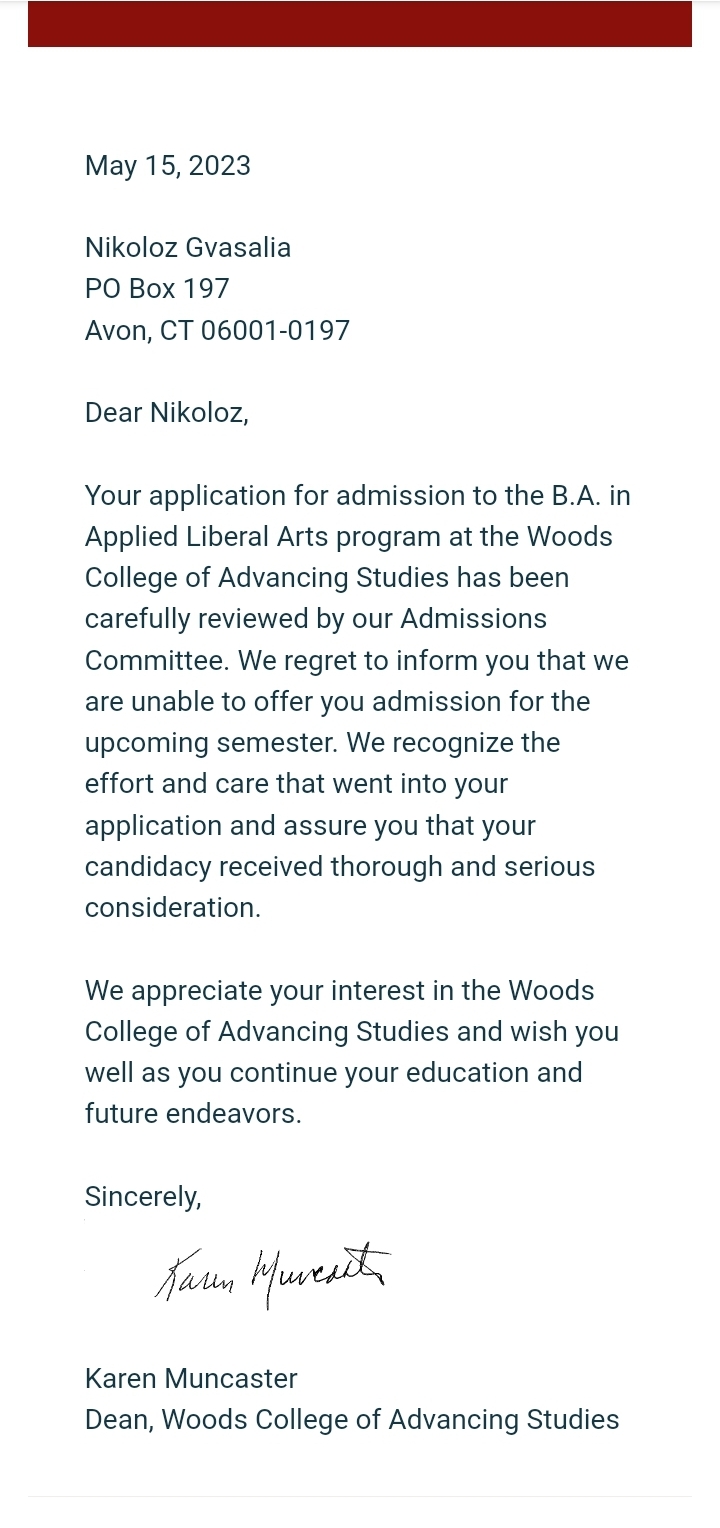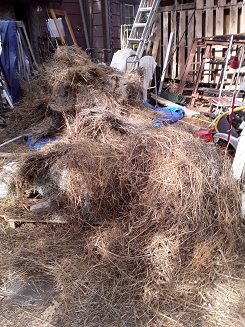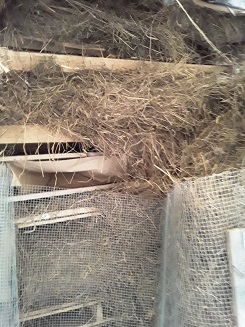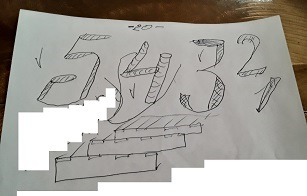Detailed analysis of the presentation
Georgia is a country located in the South Caucasus region, bordered by Russia to the north, Azerbaijan to the east, Armenia to the south, and Turkey to the west. The country is home to the indigenous Georgian people, who have a rich history and culture dating back thousands of years.
One of the most significant aspects of Georgia’s history is its location at the crossroads of Europe and Asia. This strategic position made it an important trading hub for many centuries, with the shortest land, trade, and caravan route from India passing through Georgian territory. As a result, Georgia had close ties with both Eastern and Western civilizations, making it a melting pot of cultures and ideas.
Georgia’s location also played a crucial role in its history of conflict and conquest. Throughout its history, Georgia has been invaded and occupied by various empires and states, including the Persians, Arabs, Mongols, Ottomans, and Russians. However, despite being ruled by foreign powers for much of its history, Georgia managed to preserve its distinct identity and culture.
One of the earliest and most significant discoveries in Georgia’s history is the Dmanisi site, where evidence of human presence dating back 1.8/1.7 million years was discovered. The discovery of Homo erectus in Dmanisi provided valuable insights into the evolution of early humans and showed that the first hominins to leave Africa did so much earlier than previously thought.
The climate in Georgia during the Pleistocene was more humid and forested than it is today, comparable to a Mediterranean climate. The Dmanisi fossil site, in particular, was located near an ancient lake shore, surrounded by forests and grasslands, and home to a diverse fauna of Pleistocene animals. The favorable climate in Dmanisi might have acted as a refuge for hominins in the Early Pleistocene and could have been reachable from Africa through the Levantine corridor.
The next part of the presentation provides a brief overview of Georgia’s ancient history, highlighting the various sources through which information on the region’s early states can be found. It is mentioned ancient Eastern sources such as Assyrian, Urartian, and Hittite mention the formation of Diaochia and Colcha, as well as the later formation of Iberia/Land of the Sperians in the 2nd millennium BC. The text then goes on to mention the rich information about Georgian tribes provided by ancient Greek sources such as Homer, Apollonius of Rhodes, Euripides, and Herodotus.
The text then shifts its focus to the myth of the Golden Fleece and the role played by Georgia in this ancient Greek story. The tale of the Argonauts and their journey to Colchis to obtain the Golden Fleece is well-known in the Western world, and the text provides a brief retelling of the story. The narrative emphasizes the importance of Medea, who is portrayed as a powerful sorceress and priestess of Hecate, and her role in helping Jason and the Argonauts complete the tasks set by Aeetes, the King of Colchis, to obtain the Golden Fleece.
The mention of the myth of the Golden Fleece serves to reinforce the idea that Georgia has a long and rich history that is intertwined with ancient Greek mythology. It also highlights the region’s importance as a trading hub and a gateway between Europe and Asia, as the tale of the Argonauts takes place in the context of ancient trade routes along the Black Sea.
Overall, the text serves as a brief introduction to Georgia’s ancient history and its importance in the context of ancient Eastern and Western civilizations. It provides a glimpse into the rich cultural and historical heritage of the region and emphasizes the role that myths and legends have played in shaping our understanding of the past. The text also hints at the continuing relevance of Georgia’s ancient history in the modern world, as it serves as a source of national pride and identity, and as a way to connect with other cultures and civilizations across time and space.
The third part of the presentation is about Georgian folk and traditions. The country has a rich cultural history, including ancient metallurgists and agricultural practices. Georgians are known for their winemaking and unique winemaking style using Qvevri, a traditional egg-shaped earthenware vessel for making, aging, and storing wine. Georgian cuisine is famous for its flavorful dishes that incorporate ingredients from the Mediterranean, Turkey, and the Middle East. Georgia is also known for its polyphonic singing, traditional dance, and military-style dance.
Ancient Metallurgists and Agriculture Georgia were known as the birthplace of ancient metallurgists and agriculture. The artifacts found in the eastern part of Georgia date back to the 23rd century BC and represent the best varieties of wheat and cholchian flax, which was at that time the most expensive in the world. This demonstrates Georgia’s advanced agricultural practices in ancient times, which allowed them to cultivate high-quality crops and trade with neighboring regions.
Winemaking and Qvevri Georgians are the best winemakers, and according to the census conducted by the Russian Empire in the 19th century, there were about 500 more grape varieties in the country. Qvevri winemaking is practiced throughout Georgia, particularly in village communities where unique varieties of grapes are grown. The Qvevri vessel used in winemaking is an egg-shaped earthenware vessel that is buried underground and used for making, aging, and storing wine. The use of Qvevri in winemaking dates back 8000 years ago, making Georgia the first country to produce wine.
Cuisine
Georgian cuisine is renowned for its rich flavors that are influenced by the Mediterranean, Turkey, and the Middle East. Common ingredients include walnuts, pomegranate, kidney beans, cheese, honey, coriander, and garlic. The great poet Pushkin praised Georgian cuisine, declaring that “Every Georgian dish is a poem!” The diverse eco-culture of Georgia is reflected in its cuisine, songs, and dances.
Polyphonic Singing Polyphonic singing is a secular tradition in Georgia that has a highly valued place in Georgian culture. There are three types of polyphony in Georgia: complex polyphony, polyphonic dialogue over a bass background, and contrasted polyphony with three partially improvised sung parts. The Chakrulo song, which belongs to the first category, is distinguished by its use of metaphor and yodel. Many of these songs are linked to the cult of the grapevine and date back to the eighth century.
Traditional Dance
Traditional dance is an important part of Georgian culture and stems from military moves, sports games, and dances celebrated during holidays in ancient times. The dance was popularized by the founders of the Georgian National Ballet, Iliko Sukhishvili, and his wife, Nino Ramishvili. The Kartuli and Khorumi dances are among the most popular. The Kartuli dance is a romantic/wedding dance that is performed by a dance couple. The man is not allowed to touch the woman and must keep a certain distance from his partner, showing that even in love, men must control their feelings. The Khorumi dance originated in Guria/Adjara, in southwestern Georgia, and is a war dance that incorporates themes of search, war, and the celebration of victory, as well as the courage and glory of Georgian soldiers.
Georgia has a rich cultural history, and its ancient agricultural practices, winemaking, cuisine, polyphonic singing, and traditional dance are all important parts of its culture.
The next part of the presentation provides a brief historical overview of the emergence of the Kingdom of Kartli / Iberia in Georgia, which played a significant role in the political and cultural landscape of the region from the 3rd century BC to the 5th century AD. The text notes that the Colchis people began issuing their monetary unit called “Cochrane tetri” from the 2nd century BC to the 6th century AD, reflecting the kingdom’s long-standing economic ties with the East, including Parthia, Sasanian Iran, and the Roman Empire.
The text further explains that the statue of King Farsman II of Kartli, who ruled in the 2nd century, was erected by Emperor Antoninus Pius on Mars Square in Rome. This gesture is indicative of the kingdom’s growing political and cultural influence beyond its borders. The text also highlights the pivotal role of religion in the kingdom’s history, noting that following the proclamation of Christianity as the state religion in Rome, Kartli converted to Christianity in the 4th century, which had a profound impact on its political orientation.
The text notes that the conversion to Christianity marked a new phase of confrontation with the Eastern world, as the kingdom became a target of the enemy because of religion. Despite this, the text notes that many churches from the 5th century still stand on the territory of Georgia, and their lapidary inscriptions provide valuable insight into the historic events of that era. Additionally, the text notes that Georgian is one of the 14 scripts of the world, and the inscription written with this script was found in Palestine, dating back to the 30s of the 5th century.
The text underscores the significant role of religion and cultural heritage in shaping the political and historical landscape of Georgia. The conversion to Christianity had a profound impact on the kingdom’s political and cultural identity, and the inscriptions on the walls of its churches provide valuable insight into the events of that era. Furthermore, the discovery of a Georgian inscription in Palestine highlights the wide-ranging influence of the Georgian script beyond its borders, reflecting its cultural significance in the ancient world.
Overall, the text provides a concise and informative overview of the emergence of the Kingdom of Kartli / Iberia in Georgia, highlighting its economic, political, and cultural ties with the East and the Roman Empire. It also emphasizes the pivotal role of religion in the kingdom’s history and its enduring cultural legacy in the form of its churches and inscriptions.
This part highlights the resilience and historical importance of the nation of Georgia, which has endured countless invasions and wars from neighboring states yet has managed to retain its identity and become a major player in the region. The text also emphasizes the importance of education in Georgian society, dating back to ancient times.
The presenter suggests that Georgia has a long and tumultuous history, facing aggression and invasion from neighboring states throughout the ages. Despite these challenges, the country has managed to maintain its unique cultural identity and ultimately unite into one state in the 11th century. This suggests a remarkable level of resilience and determination on the part of the Georgian people, who have fought to preserve their traditions and way of life in the face of adversity.
Furthermore, the text notes the emphasis on education in Georgian society, dating back to the 4th century. The fact that a Roman philosopher, Themistius, notes the importance of education in Georgia suggests that the country had already established a reputation for valuing knowledge and learning. This is a testament to the cultural richness and intellectual curiosity of the Georgian people, which has undoubtedly contributed to the country’s longevity and resilience throughout history.
The text also hints at the importance of religion in Georgian society, noting that the country converted to Christianity in the 4th century, following Rome’s proclamation of Christianity as the state religion. This religious conversion likely had a profound impact on Georgian society, shaping its political orientation and sparking new conflicts with neighboring states. The fact that churches from the fifth century still stand on Georgian soil is a testament to the country’s enduring religious traditions and cultural heritage.
Overall, this part paints a picture of a country that has faced significant challenges throughout its history but has managed to maintain its identity and become a major player in the region. It highlights the importance of education and intellectual curiosity in Georgian society, as well as the profound impact of religion on the country’s cultural and political development. By understanding the complex history and cultural heritage of Georgia, we can gain a deeper appreciation for the resilience and tenacity of its people, who have overcome countless obstacles to create a vibrant society.
The text presented discusses the Renaissance of Georgia and its impact on the world. The focus is on the 12th or 13th-century poem, “The Knight in the Panther’s Skin,” written by Georgia’s national poet, Shota Rustaveli, during the reign of Queen Tamar, who was one of Georgia’s greatest monarchs. The presentation highlights the economic, cultural, and scientific growth of Georgia under Tamar’s reign and how Rustaveli’s poem reflects this period of Georgia’s history.
This part of the text suggests that the Renaissance of Georgia preceded that of Europe, and “The Knight in the Panther’s Skin” was one of the brightest examples of it. The poem’s allegorical representations of contemporaneous Georgia are recognizable, and Rustaveli’s depiction of faraway lands is thought to reflect his experiences during his military campaigns. It is interesting to note that Rustaveli’s love for Queen Tamar is not confirmed, but some historians believe he served as her treasurer.
The presentation also emphasizes the significant role played by Queen Tamar in Georgia’s golden age. She expanded the Georgian kingdom to its historical maximum, repulsed invasions, and established protectorates over many area Muslim and Christian lands. Under her reign, the economy prospered, and Georgian trading caravans reached Ayyubid, the Kievan Rus, and the Byzantine Empire. The developments in medieval science, the construction of the largest monasteries and churches, and the rise of secular literature were all significant achievements during this time.
This part of the presentation highlights the importance of the poem “The Knight in the Panther’s Skin” in Georgian literature and culture. The prologue of the poem explains that Rustaveli wrote it to praise Queen Tamar, and the poem’s opening lines express this sentiment. The use of metaphors and imagery to describe the beauty and strength of Queen Tamar is evident throughout the poem. The poem also reflects the values of chivalry and courtly love that were popular in medieval Europe but with a distinctly Georgian flavor.
Overall, the presentation provides a fascinating insight into Georgia’s history and its cultural achievements. It shows how Georgia’s golden age, under the reign of Queen Tamar, was a period of significant cultural, scientific, and economic growth. It highlights the importance of “The Knight in the Panther’s Skin” in Georgian literature and how it reflects the spirit of the age. The presentation also underscores the enduring legacy of this period of Georgia’s history and its impact on the world.
this part of the presentation also highlights the historical significance of Georgia in Europe and the world during the medieval era. It emphasizes Georgia’s rich cultural heritage and its contributions to various aspects of society, such as literature, science, and trade. The presentation mentions the role of Georgia as an outpost of Europe and Christianity in the east, which is evident from its active participation in the Crusades. Moreover, it discusses the political structure of Georgia during that period, which was primarily a monarchical state with a tendency towards progress.
One of the significant events discussed in the presentation is the attempt to establish a parliament in the 12th century in Georgia. This move shows the country’s inclination towards a democratic form of government, which was ahead of its time in Europe. If successful, Georgia would have become the first state in Europe to have a parliament, overtaking the Spanish Cortes. It is worth noting that the concept of parliamentary democracy did not emerge in Europe until the 17th century. Therefore, this initiative by Georgia is a testament to its advanced political and societal outlook.
The presentation also highlights Georgia’s active participation in the Crusades, which were a series of military campaigns sanctioned by the Latin Roman Catholic Church in the medieval period. Georgia played a significant role in the Crusades, and its involvement helped protect Europe and Christianity from the Muslim invasions. The presentation mentions that King Baldwin II of Jerusalem paid a secret visit to the king of Georgia, David the Builder, which shows the level of recognition and respect Georgia commanded at that time. The Battle of Didgori, where the flag of Jerusalem fluttered next to the Georgian flag, is another example of the country’s active participation in the Crusades.
Overall, the presentation provides valuable insights into Georgia’s role in the medieval era and its contributions to European history and culture. It highlights Georgia’s progressive outlook and its willingness to embrace new ideas and concepts. The attempt to establish a parliament in the 12th century is a remarkable achievement that deserves recognition, and it is a testament to the country’s commitment to democracy and progressive thinking. Similarly, Georgia’s active participation in the Crusades shows its commitment to preserving Europe and Christianity from external threats.
After ending of presenting Georgian Rennesaince, the presenter highlights the diverse and tolerant history of Georgia. The speaker notes that even as far back as the 7th and 6th centuries BC, Georgia was a haven for exiled Jews who were granted permission to settle in the country. This was a time when Jewish communities were often persecuted and displaced, and so the fact that Georgia welcomed them is notable. The speaker goes on to say that this tradition of tolerance continued throughout Georgia’s history and that the country has never had anti-Semitic sentiments.
The speaker also notes that Georgia has been home to a variety of religions, including Judaism, Christianity, Islam, and Zoroastrianism. This diversity is reflected in the fact that in the capital city of Tbilisi, there is a Jewish synagogue, a Muslim mosque, and an Ateshga of fire worshipers, all located near the main cathedral. This shows that Georgia has been able to accommodate different religions and cultures in a peaceful manner and that these different communities have been able to coexist without conflict.
The fact that Georgia was known as a place where Muslims felt especially welcome is also significant. According to the Arab historian Al-Fariq, Tbilisi was a place where Muslims felt better than anywhere else, even in Baghdad. This suggests that Georgia was not only tolerant of different religions, but also actively sought to create a welcoming environment for all communities, regardless of their faith.
The speaker also notes that Arabs and Jews in Georgia paid fewer taxes than the Georgian population. While this may seem like a minor detail, it actually speaks to the level of acceptance and integration that these communities enjoyed in Georgian society. The fact that they were given special tax exemptions suggests that they were seen as valuable members of society and that their contributions were recognized and appreciated. Overall, this part of the presentation highlights Georgia’s long and proud tradition of tolerance and acceptance of diversity.
After the golden period of Georgia, the presenter transfers us to a historical overview of Georgia, starting from the 16th century to the Soviet era. The first part of the text highlights the challenges that Georgia faced from external forces, making it difficult for the country to resist foreign invasion. The text suggests that Georgia’s disintegration began in the 16th century, with the onslaught of Tamerlane’s invasions, followed by the Safavid dynasty, the Ottoman Empire, and the fall of the Byzantine Empire, which further isolated Georgia from Europe.
Despite these challenges, Georgia continued to strive to become a banner of Christianity at the crossroads of Europe and Asia, indicating the country’s persistence in maintaining its religious identity. However, the political orientation of Georgia started to shift towards Russia towards the end of the 18th century, with the Georgian people hoping that Russia would protect Christianity from the Ottoman Empire and Iran. This shift ultimately led to Georgia becoming part of the Russian Empire in the 19th century, even though it was against the country’s will.
The text highlights the struggles that Georgia faced during this period, including the loss of statehood and the autocephaly of the Georgian Church. This loss of autonomy sparked a centuries-old struggle to restore the country’s identity. This struggle culminated in the declaration of Georgia’s independence on May 26, 1918, and the adoption of a democratic and progressive constitution on February 21, 1921. Unfortunately, Georgia’s independence did not last, and the country became a victim of Soviet Russia, with Georgia becoming one of the socialist republics in 1922.
The presented text highlights the turbulent history of Georgia, which was plagued by foreign invasions, political shifts, and struggles for autonomy. The text provides a useful overview of Georgia’s history, emphasizing the resilience of the Georgian people in maintaining their identity despite facing numerous challenges.
Furthermore, the presentation emphasizes the importance of Georgia’s independence and the struggles faced during the Soviet era, including the imposition of Russification policies, which attempted to suppress Georgian individualism. Overall, the text provides a clear and concise overview of Georgia’s history, emphasizing the challenges faced by the country and the resilience of the Georgian people. The text also highlights the importance of Georgia’s independence and the struggles faced during the Soviet era.
This passage provides an overview of Georgia’s history during the Soviet period, discussing various aspects such as industry, agriculture, tourism, and culture. The passage highlights the positive developments that took place in Georgia during the Soviet period but also acknowledges the negative impact of Soviet rule on Georgian culture.
The passage notes that Georgia’s industry experienced significant development during the Soviet period, with particular growth in the electric power industry, mechanical engineering, fuel, and metallurgy, light, and chemical industries. Agriculture was also said to be at a high level, with Georgia being a leading producer in viticulture and livestock breeding. The expansion of railways and roads within the Georgian SSR improved transportation and facilitated economic growth.
The presenter also mentions the growth of tourism in Georgia during the Soviet period. The main sea resorts of Batumi and Sukhumi attracted visitors from other republics of the USSR regularly. This indicates the potential for the growth of the tourism industry in Georgia, which is still a significant contributor to Georgia’s economy today.
However, the passage also acknowledges that Georgian culture suffered under the Soviet Union’s rule, which imposed a policy of Russification. The Georgian people resisted this policy, and even Georgians within the Soviet political party tried to maintain Georgian individualism. Merab Berdzenishvili is cited as an example of an artist who created works that reflected Georgian patriotism and culture, even during the Soviet period.
Overall, the passage suggests that Georgia experienced both positive and negative developments during the Soviet period. While the economy and infrastructure grew, the suppression of Georgian culture had a lasting impact on the country. The example of Merab Berdzenishvili highlights the resilience of Georgian culture and the efforts of Georgian artists to maintain their national identity, even in difficult circumstances.
The last part of the presentation discusses the modern history of Georgia. After the collapse of the Soviet Union, Georgia regained its independence in 1991. However, the period from 1990 to 1992 was a difficult time for the country. President Zviad Gamsakhurdia introduced market relations, but his leadership was controversial, and a civil war broke out in Tbilisi in January 1992. As a result, Gamsakhurdia was removed from power, and the Military Council took control of the country. In March 1992, the State Council was created, and Eduard Shevardnadze became its chairman, beginning his 12-year rule of the country.
The era of Shevardnadze’s leadership was marked by a deep financial crisis, widespread unemployment, and a high level of corruption. Georgia was also faced with the loss of Abkhazia and South Ossetia, as well as two separatist regions ruled by criminal gangs. These factors caused deep indignation among the people and led to Georgia being considered a failed state.
Currently, Georgia is a unitary republic of a parliamentary type. The government of Georgia, headed by the Prime Minister, is responsible for the country’s domestic and foreign policy. In December 2018, Salome Zurabishvili became the first woman president in the history of independent modern Georgia.
Overall, the presentation provides a brief overview of the long and complex history of Georgia. It highlights the country’s significant cultural and political achievements, such as the adoption of the progressive European Constitution in the early 20th century, the development of the viticulture industry, and the creation of national patriotic-style statuary. However, it also acknowledges the many challenges and struggles that Georgia has faced throughout its history, including foreign invasions, political instability, and economic hardships. The presentation ends with a brief discussion of modern-day Georgia, highlighting the country’s shift towards parliamentary governance and the historic election of its first female president.






